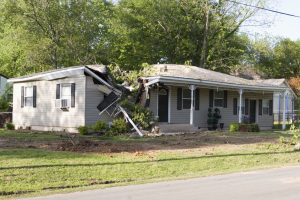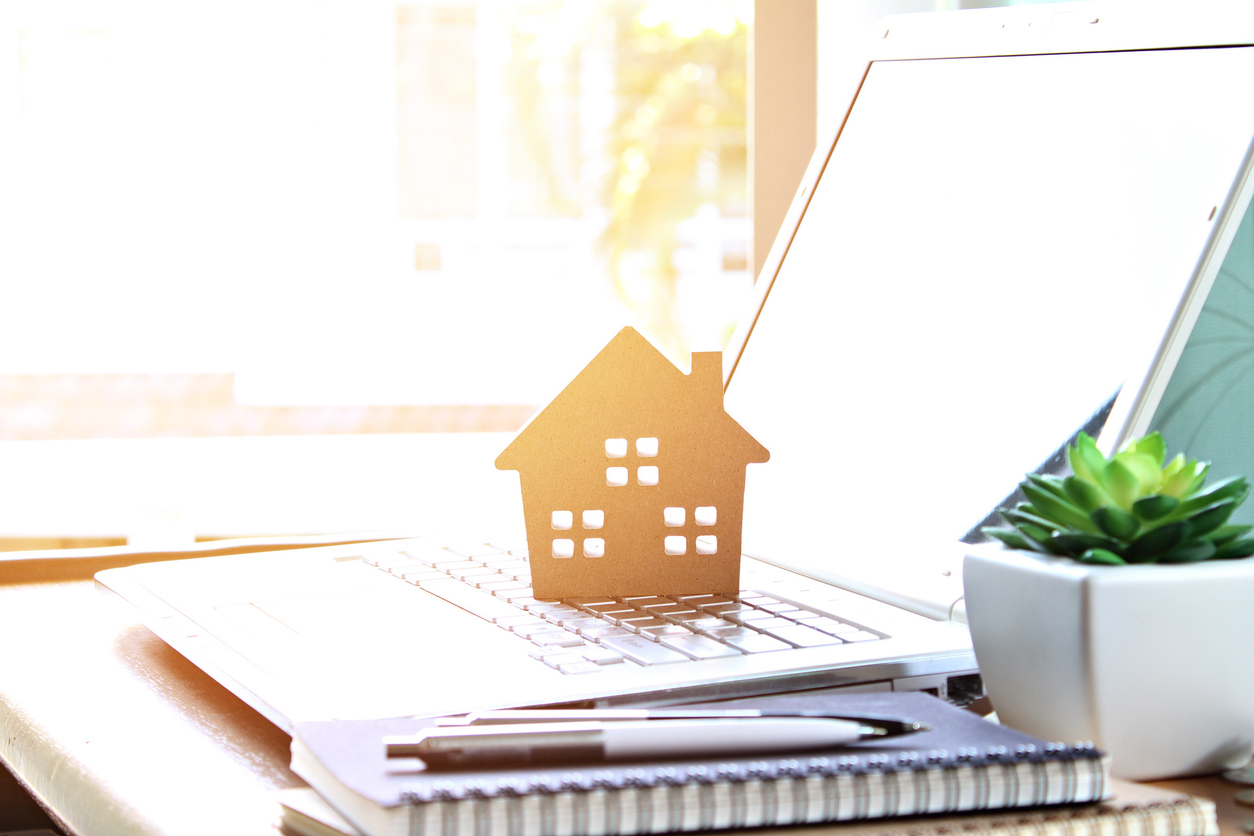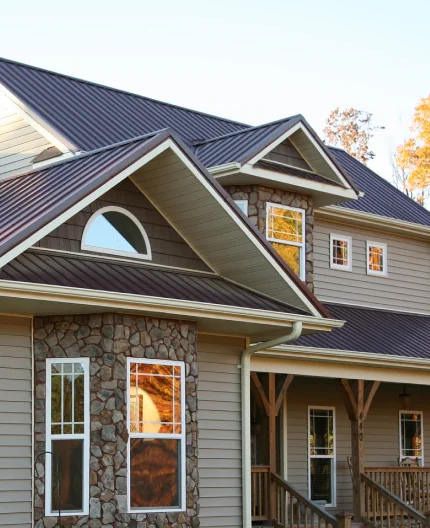What to do After a Storm Damages Your Roof
Published on Wednesday May 9, 2018
Strong winds, heavy rains, scorching sun, and massive snowfall – your home’s roof takes a beating 365 days a year. The cumulative effect of all these annual and relentless weather events can cause leaks that create significant roof damage and can impact your home’s interior.
To keep up with the demands of the seasons, make sure you follow these tips on what to do after storm damage happens to your home.
Types of storm damage to your roof
After a strong storm passes through town, it’s important to go outside and assess the possible roof damage it might have caused.
Knowing what to do after storm damage occurs is the first step in keeping your roof in good condition as even a small leak caused by heavy winds or rains can cause big problems for you and your roof in the future.
Wind damage
Some of the biggest dangers of strong wind storms are the deterioration of your shingles and the possibility of debris falling onto your roof and damaging it. Shingles can lift, come off, be punctured and leave spots open for leaks come the next rainstorm.
As roof damage from wind storms isn’t always obvious, especially in the case of missing flashing in the crevices in your roof, it’s important to do a thorough inspection after strong winds rattle your home.
Hail damage
As a leading cause of roof damage in the spring and fall, hail is a major threat to the integrity of your roof. The dings and holes created by hail can cause problems right away if they’re severe enough, but sometimes, they can go undetected for the next few storms until the true extent of the damage is realized.
Performing a thorough inspection after a hail storm and knowing what to do after storm damage does occur can help you avoid the common pitfalls that come along with hail roof damage.
Rain damage
The mother of all roofing issues, rain roof damage is the most common and of the most noticeable of all the types of storm damage that happens to your roof. Your roof’s lifelong enemy is water, and when leaks caused by other types of storms or just the old age of your roof start to expose the internal layers of your roof to moisture, problems start to happen.
Mold, rot, leaks and structural damage are all signs of rain damage and indicators that your roof may need to be replaced.
What storm damage might look like
Sometimes, the signs of roof damage are pretty obvious, like water spots on a ceiling and curled or missing roof shingles. You may also see broken or damaged roof flashing, wet walls, water issues around your home’s exterior, or winter ice damming.
What to look for:
- Shingle condition. Missing shingles are one obvious sign, but pay attention to the granule buildup on your shingles as well as early signs of damage. Hail storms can cause dings and dents in asphalt shingles and should be noted as well.
- Missing flashing along the edges of the roof and along skylights, vents, and chimneys.
- Loose or pealing sealant along those same penetration points.
- Water damage in the attic or along the ceiling.
Sometimes, the signs aren’t so obvious, which is when it might be time to call in a professional roofing expert if you don’t know what to do after storm damage shows up. The National Roofing Contractors Association recommends that homeowners get their roof inspected by a professional twice a year—once in the fall and once in the spring.
What to do if your roof is damaged in a storm

Once you’ve assessed the damage, the next step to replacing your roof is to request an estimate.
At Long Roofing, an expert will sit down with you and your family to select the perfect roofing materials — from the protective underlayment to the shingles that will cover your whole roof system.
We’ll also work through financing options, discuss warranty packages, and accommodate your schedule to find the perfect day to complete your new roof installation.
What your homeowners insurance covers
Figuring out what your homeowners insurance covers and does not cover can be confusing.
Homeowners insurance covers your roof in cases where it is damaged for reasons outside of the homeowner’s control – a few examples are fire and vandalism. Your policy will also usually cover damage from extreme weather events or “acts of God” like hurricanes and tornadoes.
Similarly, roof damage caused by moderate weather incidents such as hail, wind, and rain are often covered by homeowners insurance.
When filing a claim, it’s important to thoroughly document any damage that occurred. Also, make sure you keep receipts for all work done on the home. Many policies will cover these expenses when submitted with a claim.
However, keep in mind that coverage will often depend on the age of your roof, the area you live in, and may other factors.
The easiest way to know what’s covered or what’s not when it comes to storm damage is to contact your insurance provider and go over the specifics of your policy, including what’s covered and what your deductible may (or may not) be.
What your warranty looks like
When you purchase a new whole roof system, that roof will come with its own warranty. But not all roof warranties are the same. In fact, many homeowners learn the hard way that most roof warranties only cover the cost of materials or just manufacturer or installation defects—not weather-related issues.
Long Roofing is one of the roofing warranty leaders in North America. Our SureStart PLUS® roofing warranty can cover your roof up to 50 years. The cost of shingles and labor for repairs is 100 percent covered, coverage is not prorated over the course of the protection period, and the warranty is transferable to a new homeowner.
Beware of storm chasers

The last and final point we’ll make about natural disasters is that they can be a magnet for dishonest contractors.
“Unfortunately, severe storms can bring out the worst in people, especially unscrupulous roofing contractors who scam consumers needing to repair or replace their storm-damaged roofs,” the Insurance Institute for Business and Home Safety said after Denver’s record-breaking hail storm in 2017. “These fraudsters will often make false promises, insist on full payment before work begins or is completed. Sometimes, they will even create damage where none existed.”
Do your due diligence when choosing a roofing contractor. Check with local and state agencies to find out if your anticipated contractor is licensed and qualified to do the work.
Did a recent storm cause roof damage to your home? Give us a call.
If you need a roof replacement, you need an expert that takes the time and works with your lifestyle and finances. After we take a good look at your home, we will work with you to put together the perfect roofing package for you – including our 50-year warranty.
We bring trust and peace of mind to every Long Roofing roof. Contact Long Roofing online to get a price, schedule a free, in-home consultation or find answers to any home roofing questions.
Interested in Long Home Products?
See our special offers now.
*Excludes labor. Subject to credit approval.
**Excludes labor. Subject to credit approval.
One-day installs contingent upon municipal rules and regulations.
By submitting a form, I authorize Long Home to contact me with information about its products and services via mail, email, phone and/or text at the contact information provided, even if I am on the national do not call list. Long Home may use automated telephone technology to initiate calls to its customers. Calls and in person estimates may be recorded for quality and training purposes.








